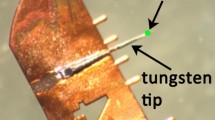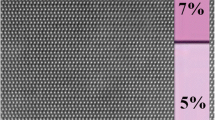Abstract.
This paper briefly reviews the potential applicability of analytical transmission electron microscopy (TEM) to elucidate both structural and chemical peculiarities of materials at high lateral resolution. Examples of analytical TEM investigations performed by energy-dispersive X-ray spectroscopy (EDXS), electron energy loss spectroscopy (EELS), and energy-filtered TEM (EFTEM) are presented for different materials systems including metals, ceramics, and compound semiconductors. In particular, results are given of imaging the element distribution in the interface region between γ matrix and γ' precipitate in the nickel-based superalloy SC16 by energy-filtered TEM. For core-shell structured BaTiO3 particles the chemical composition and even the chemical bonding were revealed by EELS at a resolution of about 1 nm. A sub-nanometer resolution is demonstrated by energy-selective images of the Ga distribution in the surrounding of (In,Ga)As quantum dots. Moreover, the element distribution in (Al,Ga)As/AlAs multilayers with linear concentration gradients in a range of about 10 nm was investigated by EDXS line-profile analyses and EFTEM.
Similar content being viewed by others
Author information
Authors and Affiliations
Additional information
Electronic Publication
Rights and permissions
About this article
Cite this article
Schneider, .R. High-resolution analytical TEM of nanostructured materials. Anal Bioanal Chem 374, 639–645 (2002). https://doi.org/10.1007/s00216-002-1459-8
Received:
Revised:
Accepted:
Issue Date:
DOI: https://doi.org/10.1007/s00216-002-1459-8




